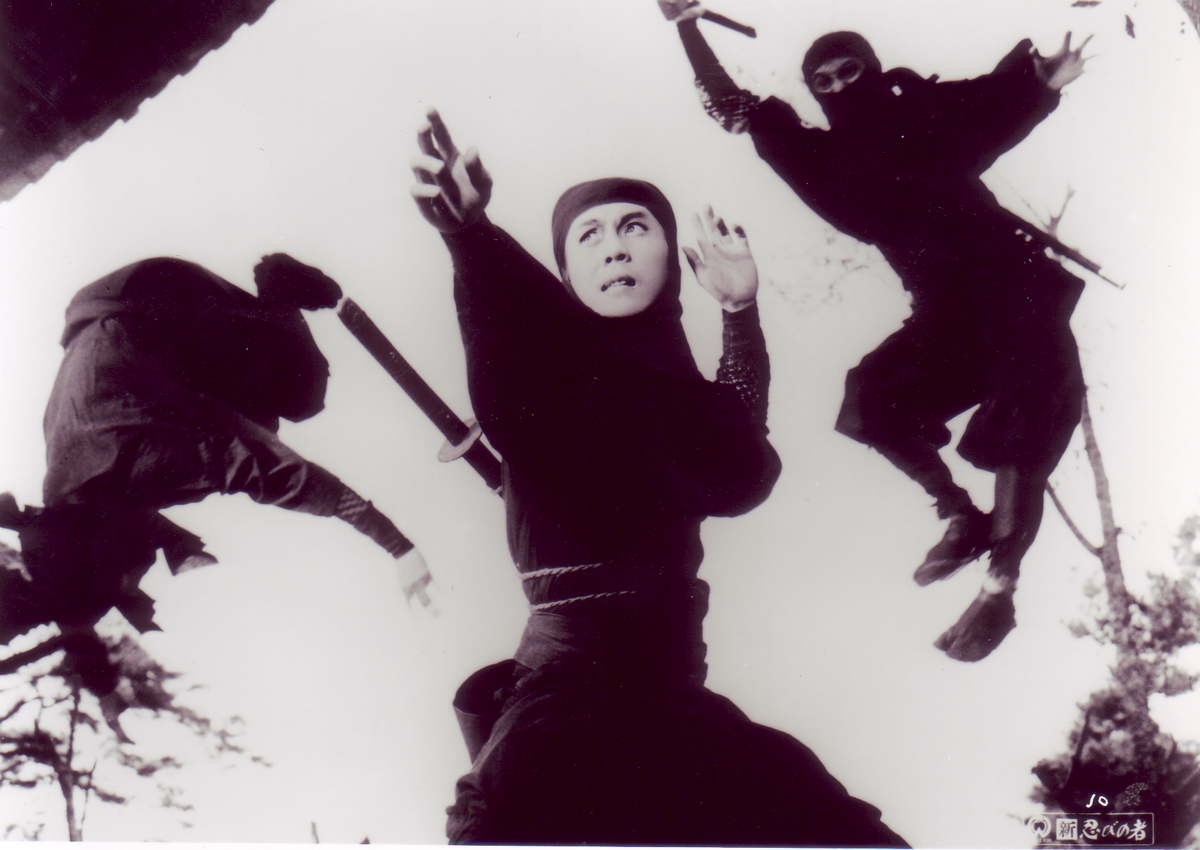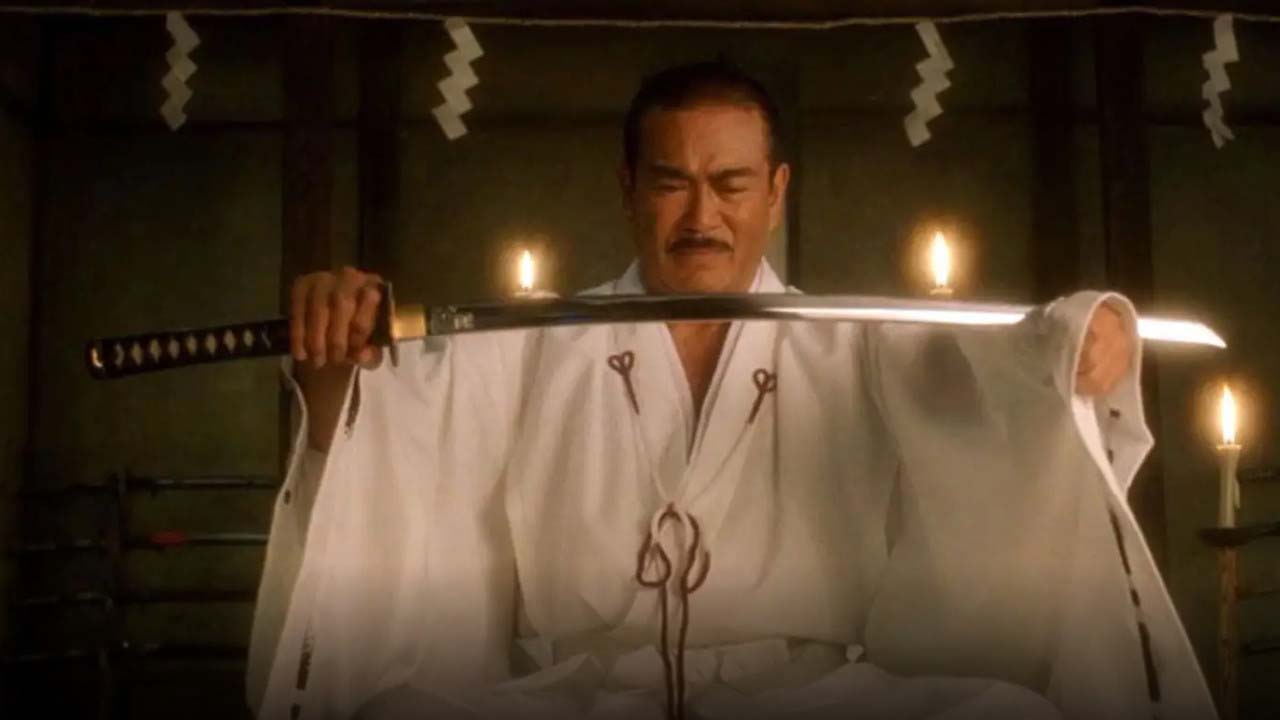Ninja Among Samurai: Following the Shadow Path of Ninjutsu with Hattori Hanzo
Introduction
"The goal of a ninja is to be invisible, to be everywhere yet noticed nowhere."
- Masaaki Hatsune
"Life is a path of shadow and light" - these words, although not directly attributed to Hattori Hanzo, reflect the duality of his life as both a ninja and a samurai. Hattori Hanzo (1542-1596), often known as "Demon Hanzo," was one of the most enigmatic and fascinating figures in Japanese history. As a master of ninjutsu and a loyal samurai of the Tokugawa clan, Hanzo earned a reputation as both a fearless warrior and a sophisticated strategist. Ninjutsu, the art he perfected, was not just fighting techniques but a deep philosophy of survival, adaptation, and cunning.
His legacy in Japanese culture is as diverse as his skills. Hattori Hanzo left behind a rich legacy that has endured through the ages. His life and legend have inspired countless stories, literary works, films, and even characters in video games and anime. He is a symbol of courage, wisdom, and deep spirituality, serving as a bridge between historical reality and the fascinating world of legends and myths.
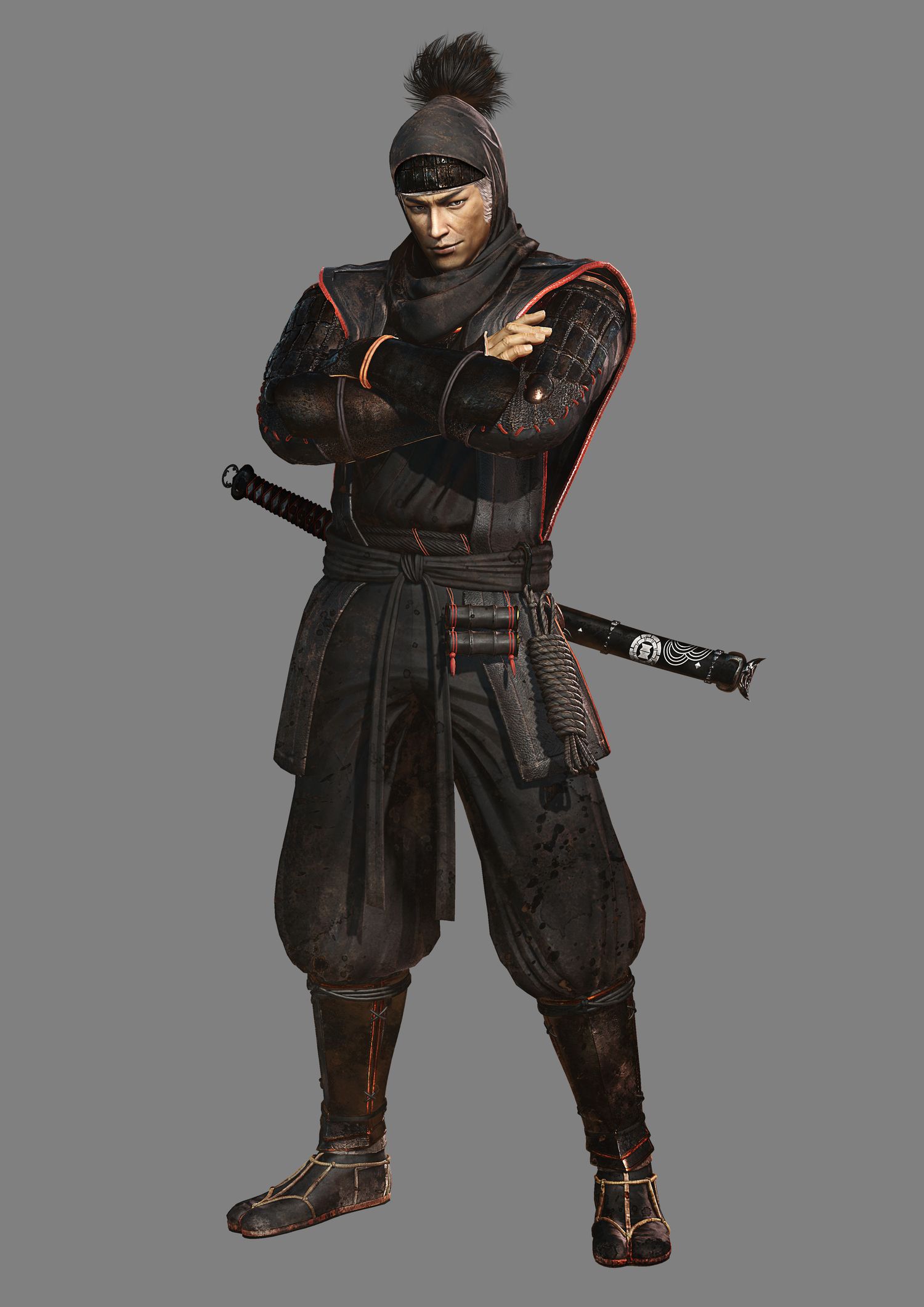
Hattori Hanzo, born in 1542 in the province of Iga, known as the mecca of ninjutsu, showed extraordinary abilities from an early age. Iga, famous for its secret techniques and schools of martial arts, was the perfect place for young Hanzo's development. His family roots traced back to Hatauji, considered the ancestor of the ninja.
Hattori Hanzo came from a family with strong martial and ninja traditions. His father, Yasunaga, a known and respected warrior, played a significant role in shaping his son's skills and attitudes. Yasunaga, often called the first Hanzo, not only imparted knowledge of ninjutsu techniques to young Hattori but also instilled in him principles of honor and strategy. Thanks to his heritage, Hattori had contact with various aspects of martial arts and espionage from an early age, greatly influencing his future career as a legendary ninja.
At the age of 8, Hanzo began intensive training in ninjutsu, focusing on skills such as espionage, infiltration, and silent elimination of enemies. Ninjutsu, more than a martial art, was a way of survival and adaptation in the challenging conditions of feudal Japan.
By the age of 12, Hanzo was recognized as a full-fledged ninja, an extraordinary feat given his young age. At 16, already an experienced warrior, Hanzo participated in his first significant battle, quickly gaining a reputation for his skills and bravery.
The Hattori family, being vassals of the Tokugawa clan, gave young Hanzo access to significant missions and operations. His early actions were crucial in raising his status among ninjutsu warriors, with his early years in Iga shaping the foundations of his future achievements as a legendary ninja.
Service for the Tokugawa Clan
 Beginning of Relationship with Ieyasu Tokugawa
Beginning of Relationship with Ieyasu Tokugawa
Hattori Hanzo began serving Ieyasu Tokugawa, the future shogun, at a young age. His first actions on behalf of the Tokugawa clan took place in the 1550s when Tokugawa sought to strengthen his position among the warring clans of feudal Japan. Hanzo, with his ninjutsu skills, quickly became a valuable asset to Tokugawa, offering his services in espionage, reconnaissance, and secret missions.
Key Missions and Battles
One of Hanzo's first significant actions was his participation in the Battle of Anegawa in 1570, where he supported the Tokugawa forces. His skills and strategies in ninjutsu were used to gather intelligence and disrupt enemies. In the 1573 Battle of Mikatagahara, Hanzo played a key role in defending and saving Ieyasu Tokugawa's life, strengthening their mutual trust and loyalty.
Hanzo's Role as Protector of Ieyasu
After the death of Oda Nobunaga in 1582, Ieyasu found himself in danger. Hanzo, using his knowledge of the terrain and skills in ninjutsu, safely led Ieyasu through lands controlled by hostile clans, which was a decisive moment in the survival and rise of the Tokugawa power. This action significantly strengthened Hanzo's reputation as a reliable and dedicated guardian.
 Managing a Network of Spies
Managing a Network of Spies
In addition to direct military actions, Hattori Hanzo was also responsible for creating and managing a network of spies for the Tokugawa clan. His skills in information gathering, planning, and strategy were invaluable in consolidating Tokugawa's power. He also took care of protecting Edo (later Tokyo), which became the new capital under the Tokugawa rule.
Later Years and Legacy
For his services, Hanzo was awarded land and a high position. He died in 1596, leaving behind a legacy as one of the most outstanding ninjas in Japanese history. His actions and loyalty had a significant impact on the consolidation of Ieyasu Tokugawa's power and shaped the history of Japan.
 Hattori Hanzo's Legendary Deeds and Battles
Hattori Hanzo's Legendary Deeds and Battles
Battle of Anegawa (1570)
In the Battle of Anegawa, Hanzo demonstrated his skills as a strategist and warrior. Supporting the Tokugawa forces against the Asakura and Azai clan alliance, Hanzo used ninjutsu techniques to surprise and disorient the enemy. His ability to move stealthily and gather information was key to Tokugawa's victory.
Battle of Mikatagahara (1573)
In this battle, Hanzo again showed his strategic genius, helping Tokugawa forces repel the much larger forces of Takeda Shingen. His tactics included the use of camouflage and traps, allowing for the surprise and disorganization of the enemy.
Defense of Noda-Fukushima Castle (1579)
In 1579, Hanzo played a key role in defending Noda-Fukushima Castle, a strategically important point for the Tokugawa clan. His ability to conduct diversionary actions and sabotage the enemy's supply lines was decisive in repelling the Takeda clan attack. Hanzo effectively used local resources and terrain to confuse and weaken the enemy forces before the main clash.
Escape of Ieyasu from Sakai to Okazaki
The escape of Ieyasu Tokugawa from Sakai to Okazaki in 1582, following the tragic death of Oda Nobunaga, is one of the most spectacular moments in Hattori Hanzo's career. After Nobunaga's assassination by Akechi Mitsuhide, Ieyasu was in a difficult situation. As an ally of Nobunaga, he could become the next target of Mitsuhide. Ieyasu, then in Sakai, had to quickly return to his domain in Mikawa, but the road was full of dangers.
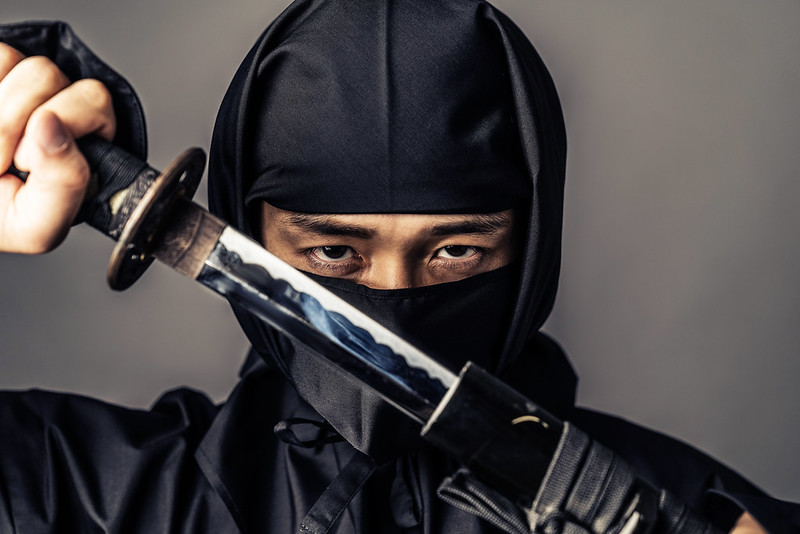
During the journey, Hanzo and his men employed various diversionary and camouflage tactics. They used complex maneuvers to mislead the pursuing enemy forces and protect Ieyasu. Hanzo demonstrated his mastery in avoiding detection, allowing the group to safely reach Okazaki. This action was not only proof of Hanzo's extraordinary skills as a ninja but also a significant moment in Japanese history.
Ieyasu's safe escape to Okazaki allowed him to later consolidate power and ultimately unite Japan under his rule as the shogun. Hanzo's actions in this mission significantly contributed to strengthening his reputation as one of the most distinguished ninjas of his time and earned him eternal fame. His role in this dangerous escape cemented his legend and position in Japanese history.
 Samurai by Birth, Ninja by Training
Samurai by Birth, Ninja by Training
Hanzo was formally a vassal and samurai serving the Tokugawa clan. His actions as a samurai included participation in battles and military service, consistent with the traditional role of a samurai in feudal Japan. As a loyal samurai, Hanzo played a key role in the defense and protection of Ieyasu Tokugawa, in line with the samurai code of bushido.
On the other hand, Hanzo was also known for his skills in ninjutsu, including espionage, camouflage tactics, and unconventional combat methods. His abilities in infiltration and secret operations are characteristic of a ninja, indicating that Hanzo also possessed deep knowledge and skills typical of a ninja.
As a result, Hanzo is often seen as a figure combining both these worlds. His legend, rich in stories about his tactics and skills, creates an image of a warrior who was both a samurai and a master of ninja techniques. This duality makes him a unique and fascinating character in the history of Japanese martial arts.
 Hanzo Hattori in Literature Over the Centuries
Hanzo Hattori in Literature Over the Centuries
During the Edo period (1603-1868), Hanzo was the hero of numerous folk tales and kabuki. His character was often portrayed in dramas and historical novels (joruri) as a mysterious and powerful ninja. These early stories, although not always accurately reflecting historical facts, shaped his legend in Japanese cultural consciousness.
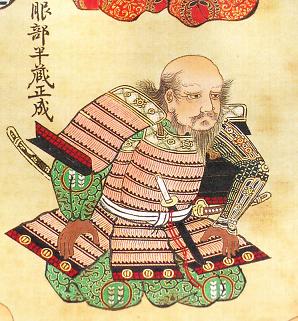
In the 20th century, Hattori Hanzo gained popularity in modern literary works and film adaptations. His character was the subject of novels such as "Shinobi no Mono" by Tomoyoshi Murayama (1962), where he was portrayed as a fearless and cunning ninja. This trend is also continued in modern literature, where Hanzo is often depicted as an archetypal ninja, combining wisdom, strength, and mystery.
The Theme of Hattori Hanzo in Anime
"Samurai Champloo" - In this anime, the character of Hattori Hanzo appears as a master swordsman and ninja, presenting him in the context of the Edo period. His character is an important part of the plot and reflects the classic image of a ninja.
"Ninja Resurrection" - In this series, Hattori Hanzo is portrayed as a powerful warrior whose abilities surpass human limitations, enriching the plot with supernatural elements.
"Sengoku Basara" - Here, Hattori Hanzo appears as a loyal and effective ninja serving Ieyasu Tokugawa. His character is crucial to many plot threads.

"Brave 10" - In this anime, Hattori Hanzo is depicted as a masterful ninja character, influencing the course of events and relationships between characters.
"Gintama" - Although "Gintama" is a comedy series, one episode features a character inspired by Hattori Hanzo, bringing historical elements and humor to the series.
 "Naruto" - In "Naruto," while Hattori Hanzo's character does not appear directly, elements of ninjutsu and the ninja image are strongly inspired by the legend of Hanzo and other historical figures.
"Naruto" - In "Naruto," while Hattori Hanzo's character does not appear directly, elements of ninjutsu and the ninja image are strongly inspired by the legend of Hanzo and other historical figures.
"Basilisk" - In this series, although Hattori Hanzo does not appear directly, the influence of his legend is noticeable in the portrayal of conflicts and ninja techniques.
"Samurai Deeper Kyo" - In this anime series, Hattori Hanzo is a secondary character, but his presence influences the development of the plot and relationships between characters, emphasizing his historical significance.
Hattori Hanzo in Cinematography
"Samurai I: Musashi Miyamoto" (1954): This classic Japanese film, directed by Hiroshi Inagaki, is the first part of the "Samurai" trilogy, in which Hattori Hanzo appears as a secondary character. The film depicts the story of the legendary samurai Miyamoto Musashi, showing his transformation from a wild warrior to a master swordsman. In the film, Hanzo is portrayed as an experienced and wise warrior, influencing the development of the main character.
"Shinobi no Mono" (1962): This film series, where Hattori Hanzo is one of the key characters, tells about conflicts and intrigues during the Sengoku period, depicting Hanzo as a cunning and effective ninja, whose actions are significant to the course of history.
"Kill Bill" (2003): Although "Kill Bill" by Quentin Tarantino is a Hollywood film, it introduces the character Hattori Hanzo (played by Sonny Chiba), who is a master swordsmith. In the film, Hanzo is depicted as a retired master who creates a special sword for the main character. This character, although different from the historical Hanzo, pays tribute to his legend as a master of weaponry.
Greatness in the Shadows
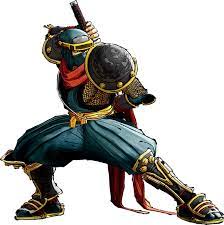
Hattori Hanzo, as a historical figure, is a testament to how a legend can endure and evolve over centuries, maintaining its significance and inspiring successive generations. His life and accomplishments, shrouded in mystery, continue to fascinate and form an important part of Japan's cultural heritage.
"Strong Japanese Women"
see book by the author
of the page
未開 ソビエライ
An enthusiast of Asian culture with a deep appreciation for the diverse philosophies of the world. By education, a psychologist and philologist specializing in Korean studies. At heart, a programmer (primarily for Android) and a passionate technology enthusiast, as well as a practitioner of Zen and mono no aware. In moments of tranquility, adheres to a disciplined lifestyle, firmly believing that perseverance, continuous personal growth, and dedication to one's passions are the wisest paths in life. Author of the book "Strong Women of Japan" (>>see more)
Personal motto:
"The most powerful force in the universe is compound interest." - Albert Einstein (probably)
Mike Soray
(aka Michał Sobieraj)
未開 ソビエライ
An enthusiast of Asian culture with a deep appreciation for the diverse philosophies of the world. By education, a psychologist and philologist specializing in Korean studies. At heart, a programmer (primarily for Android) and a passionate technology enthusiast, as well as a practitioner of Zen and mono no aware. In moments of tranquility, adheres to a disciplined lifestyle, firmly believing that perseverance, continuous personal growth, and dedication to one's passions are the wisest paths in life. Author of the book "Strong Women of Japan" (>>see more)
Personal motto:
"The most powerful force in the universe is compound interest." - Albert Einstein (probably)
Mike Soray
(aka Michał Sobieraj)
Write us...
Ciechanów, Polska
dr.imyon@gmail.com
___________________
inari.smart
Would you like to share your thoughts or feedback about our website or app? Leave us a message, and we’ll get back to you quickly. We value your perspective!

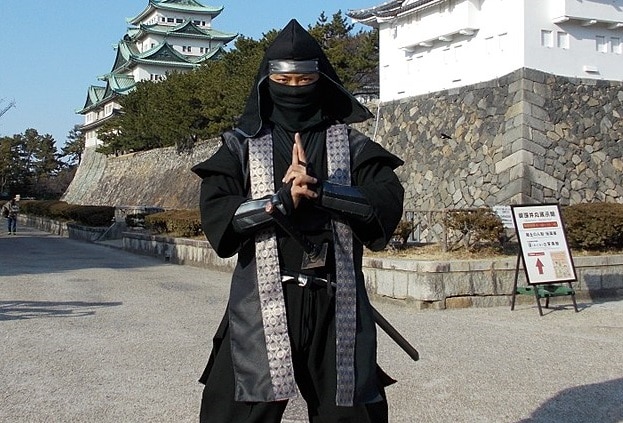 Managing a Network of Spies
Managing a Network of Spies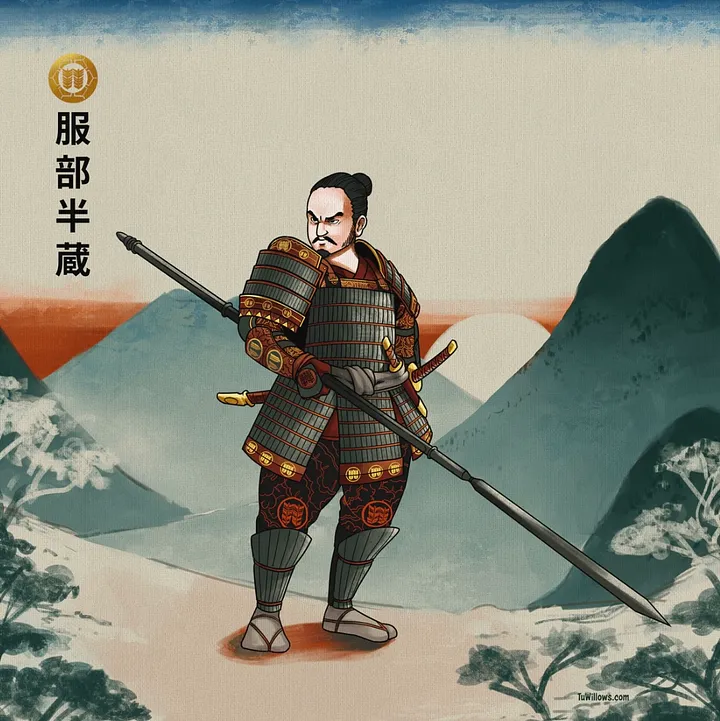 Hattori Hanzo's Legendary Deeds and Battles
Hattori Hanzo's Legendary Deeds and Battles
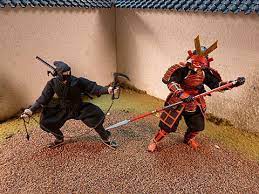 Samurai by Birth, Ninja by Training
Samurai by Birth, Ninja by Training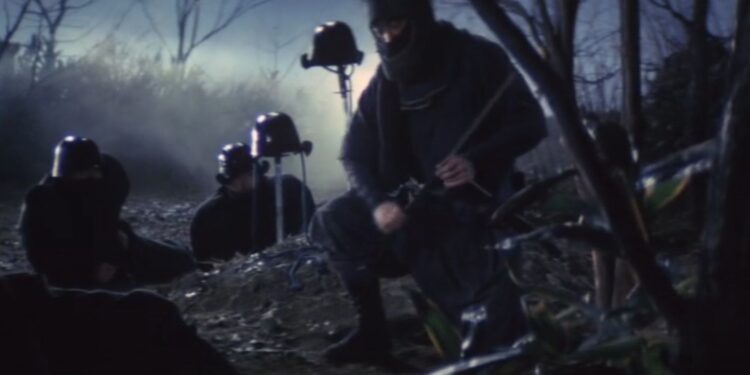 Hanzo Hattori in Literature Over the Centuries
Hanzo Hattori in Literature Over the Centuries "Naruto" - In "Naruto," while Hattori Hanzo's character does not appear directly, elements of ninjutsu and the ninja image are strongly inspired by the legend of Hanzo and other historical figures.
"Naruto" - In "Naruto," while Hattori Hanzo's character does not appear directly, elements of ninjutsu and the ninja image are strongly inspired by the legend of Hanzo and other historical figures.